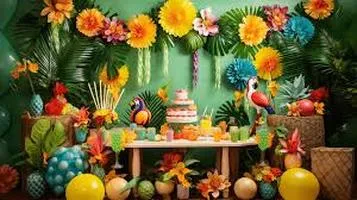Discovering Timeless Elegance: A Deep Dive into Vintage Clothing
Vintage clothing refers to garments that originate from a previous era, typically characterized by their unique styles, quality craftsmanship, and historical significance. These pieces, often dating from the early 20th century to the late 20th century, offer a nostalgic glimpse into the fashion trends of past decades. Vintage clothing is treasured for its individuality, as it allows wearers to express personal style while embracing sustainable fashion practices. Sourcing vintage attire can be an adventure, with items found in thrift stores, specialty vintage shops, or online marketplaces. Collectors and fashion enthusiasts alike are drawn to vintage clothing for its rarity and the stories each piece carries, making it not just a wardrobe choice, but a celebration of history and timeless design.

In a world where fast fashion dominates, vintage clothing offers a refreshing escape into the realms of timeless elegance and sustainable living. With each piece carrying its own story, vintage apparel captures the essence of bygone eras while providing an unparalleled sense of individuality. This review aims to delve into the allure, benefits, and potential drawbacks of embracing vintage clothing.
The Allure of Vintage Clothing
One of the most compelling aspects of vintage clothing is its unique charm. Unlike mass-produced contemporary fashion, vintage pieces often boast intricate designs, high-quality materials, and exceptional craftsmanship. Whether it's a delicate lace gown from the 1920s, a bold printed dress from the 1960s, or a power suit from the 1980s, each item reflects the cultural and social nuances of its time. This historical richness imbues vintage clothing with an irreplaceable sense of character and authenticity.
Moreover, wearing vintage allows individuals to stand out in a sea of conformity. In an age where trends change at the speed of light, vintage offers a sense of permanence and individuality. There's an undeniable thrill in hunting for that perfect piece that resonates with your personal style, knowing that it's one-of-a-kind. Vintage clothing empowers fashion enthusiasts to curate a wardrobe that tells their unique story, rather than passively following fleeting trends.
Sustainable Fashion Choice
Another significant advantage of vintage clothing is its contribution to sustainability. The fashion industry is notorious for its environmental impact, from excessive water usage to pollution and waste. By purchasing vintage, consumers are essentially recycling fashion, reducing the demand for new production and minimizing their carbon footprint. This is a powerful way to make a positive environmental impact without sacrificing style.
Furthermore, the longevity of vintage pieces speaks to their quality. Unlike many modern garments, which are designed for short-term use, vintage clothing often features superior craftsmanship and durable materials. This means that vintage items can last for decades if properly cared for, promoting a more sustainable and mindful approach to fashion consumption.
A Treasure Hunt Experience
Shopping for vintage clothing is an adventure in itself. Unlike the predictability of modern retail stores, vintage shops and markets offer a treasure hunt experience. Each visit is an opportunity to discover hidden gems and unexpected finds. This element of surprise makes vintage shopping a delightful and rewarding pastime for fashion aficionados.
Many vintage stores also offer a curated selection, ensuring a high standard of quality and authenticity. Knowledgeable shop owners and staff can provide valuable insights into the history and significance of various pieces, enriching the overall shopping experience. Additionally, the sense of community within the vintage fashion scene is palpable, with events, fairs, and online groups bringing enthusiasts together to share their passion and discoveries.
Potential Drawbacks
Despite its many advantages, vintage clothing is not without its challenges. One of the primary concerns is sizing. Vintage sizes often differ significantly from modern ones, and finding the right fit can be a daunting task. It may require trying on multiple pieces or even alterations, which can be time-consuming and costly.
Another consideration is the condition of vintage items. While many pieces are well-preserved, others may show signs of wear and tear, such as fading, stains, or missing buttons. It's essential to inspect items carefully and, if purchasing online, to rely on reputable sellers who provide detailed descriptions and photos.
Pricing can also be a factor. While vintage clothing can be more affordable than high-end designer pieces, some rare or highly sought-after items can come with a hefty price tag. However, considering the quality and uniqueness of these pieces, many find the investment worthwhile.
Conclusion
In conclusion, vintage clothing offers a captivating blend of history, individuality, and sustainability. Its unique charm and superior craftsmanship make it a beloved choice for those seeking to express their personal style while making a positive environmental impact. The treasure hunt aspect of vintage shopping adds an element of excitement and discovery, making it a rewarding experience for fashion enthusiasts.
While there are challenges, such as sizing and condition concerns, these are often outweighed by the benefits of owning a piece of fashion history. Vintage clothing allows us to step back in time, embrace timeless elegance, and make a statement that transcends fleeting trends. For those willing to embark on the journey, vintage fashion promises a wardrobe filled with stories, character, and enduring style.






